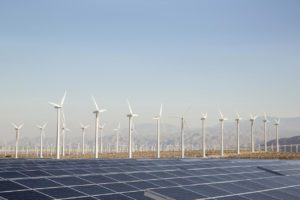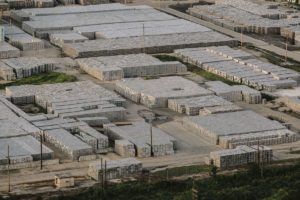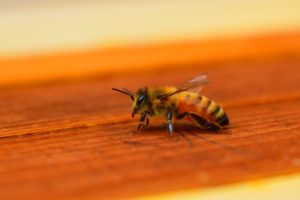
Wind Solar Energy LLC (Kyiv) intends to build a 60 MW wind power plant in Zhytomyr region, according to the website of the unified register of environmental impact assessment.
The project includes building 18 wind turbines with a capacity of up to 5.6 MW each. The height of the towers will be 166 meters, the diameter of the rotor is up to 150 meters.
In addition, the plans include the construction of 12 km of technological roads, 12 km of cable networks, as well as power lines of up to 6 km. The operation life of the wind farm is 20 years.
As reported, Wind Solar Energy intends to build three phases of the Lisova wind plant with a total capacity of up to 190 MW in the area of the Pokaliv village (Korosten district, Zhytomyr region).
According to data posted on the company’s website, Wind Solar Energy through its subsidiary Solar Kvant has been operating solar plants of 5 MW on 10 hectares in Dnipropetrovsk region since 2013.
According to the unified register of legal entities, the ultimate beneficial owner of Wind Solar Energy is Elvira Tesliuk, before that the Cypriot company WSE CYPRUS LTD was in the ownership structure.

Ukraine in January-July of this year increased imports of aluminum ore and concentrate (bauxites) in natural terms by 9.8% compared to the same period in 2018, to 3.42 million tonnes.
According to customs statistics released by the State Fiscal Service, during this period bauxite imports in monetary terms increased by 21.3%, to $133.376 million.
At the same time, imports were mainly from Guinea (58.31% of deliveries in monetary terms), Guyana (36.62%), and Brazil (2.19%).
In January-July 2019, some 22 tonnes of bauxite were exported to Poland for $1,000, whereas in January-July 2018 some 45 tonnes of bauxite were re-exported to Poland for $5,000.

Ukraine’s ore mining enterprises increased imports of iron ore and raw materials (IORM) in physical terms by 33.6% in January-July 2019 year-on-year, to 775,935 tonnes.
Import of IORM for the mentioned period in monetary terms grew by 26.4%, up to $143.995 million, according to a State Fiscal Service of Ukraine customs statistics report.
The bulk of iron ore was imported from Ghana (74.74% of total imports in monetary terms), Russia (20.74%), and Georgia (3.95%).
In January-July 2018, Ukraine exported 18,983 tonnes of IORM worth $1.693 million to Czech Republic (30.38%), Hungary (28.43%) and Slovak Republic (23.29%), while through seven months of 2018 the country exported 29,491 tonnes for $2.144 million.

Passenger traffic at Kharkiv International Airport in January-July 2019 amounted to 683,300 people, which is 25% more than in the same period of 2018, the airport writes on its page in Facebook.
In July 2019, some 130,700 people used the airport’s services, which is 25% more than in July 2018.
The most popular destinations for this period were Antalya, Kyiv, Istanbul, Sharm el-Sheikh, and Warsaw.
As reported, passenger traffic at Kharkiv airport in 2018 was 962,500 people, which is 19% more than in 2017.
Kharkiv Airport has a runway with a length of 2,500 meters and a width of 50 meters. There are two passenger terminals with a capacity of 100 and 650 people per hour in its territory.

Private enterprise Zakhidny Bug in Lviv region enlarged a bank land by 1,700 hectares, up to 53,000 hectares after purchase of the enterprise Hai Halychyny LLC.
As the company wrote on Facebook on Wednesday, now the company’s agrochemical laboratory is analyzing the soils to determine the crops for which the newly acquired territory will be the most favorable place to grow, and is also working over the recommendations for nutrition and protection of these crops. Afterwards, the soils will be prepared for cultivating new crops.
As reported, Zakhidny Bug acquired Hai Halychyny LLC, which provided the buyer with over 50% of the voting shares on the company’s board.
Zakhidny Bug, founded in 2003, is engaged in the cultivation, storage and sale of grain, industrial and feed crops. It rents nearly 53,000 hectares of landd in Lviv and Volyn regions, and since 2019 it also uses lands in Chernivtsi and Ternopil regions.
Hai Halychyny LLC is engaged in the cultivation of grain, legumes and oilseeds.

The Ministry of Agrarian Policy and Food of Ukraine has approved mandatory requirements for honey, which will come in force in six months, on February 6, 2020.
According to a report on the ministry’s website, its order No. 330 dated June 19, 2019 and officially published on August 6 harmonizes Ukrainian legislation with European legislation regarding honey requirements. The document will improve the regulatory framework for the labeling, production and sale of honey.
The ministry said that voluntary application of the approved requirements is envisaged until January 1, 2023, which will allow market operators to prepare for new requirements.
The document divides honey by origin into nectar (flower) and honeydew, by the method of production into honeycomb, honeycombs in honey, honey, centrifugalized and pressed honey.
The labeling requirements indicate that the package of honey should contain information about the country of origin, the label of honey for confectionery products along with its name it should be indicated that it is intended only for products to be processed.